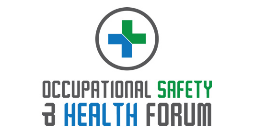For senior occupational health and safety (OHS) professionals, business continuity planning (BCP) and disaster recovery (DR) are critical components of a comprehensive risk management strategy. By integrating health and safety considerations into these plans, organisations can protect employees, assets, and operations…
Understanding the Interplay Between Health and Safety and BCP/DR
- Employee Well-being: A robust BCP/DR plan prioritises employee safety and well-being during and after a crisis.This includes emergency procedures, evacuation plans, and post-incident support.
- Workplace Safety: Ensure that emergency response procedures address potential hazards and risks to employee safety. This might include hazardous material handling, fire safety, and first aid provisions.
- Legal Compliance: Adherence to health and safety regulations is essential for business continuity. Ensure your plans align with UK legislation, such as the Health and Safety at Work Act 1974.
Key Considerations for OHS Professionals
- Risk Assessment: Conduct thorough risk assessments to identify potential hazards and their impact on business operations. This should include natural disasters, pandemics, cyberattacks, and other disruptions.
- Emergency Response Planning: Develop detailed emergency response plans that outline roles and responsibilities,communication procedures, and evacuation strategies.
- Employee Training: Provide comprehensive training to employees on emergency procedures, including first aid,fire safety, and evacuation drills.
- Business Impact Analysis: Assess the potential impact of disruptions on health and safety functions. Identify critical activities and dependencies to prioritize recovery efforts.
- Supply Chain Resilience: Evaluate the resilience of your supply chain for essential health and safety equipment and services.
- Mental Health Support: Incorporate plans for supporting employee mental health during and after a crisis,including access to counselling services.
- Collaboration with Other Departments: Work closely with IT, security, and HR departments to ensure a coordinated approach to business continuity and disaster recovery.
Integration with Business Continuity Plans
- Health and Safety as a Core Function: Ensure health and safety is represented at the strategic level of the BCP.
- Regular Testing and Review: Participate in regular BCP testing exercises to identify gaps and refine response procedures.
- Emergency Response Teams: Include health and safety representatives in emergency response teams.
- Communication and Collaboration: Maintain open communication with the business continuity management team to ensure alignment and integration of health and safety considerations.
By proactively addressing health and safety within the context of business continuity and disaster recovery, OHS professionals can contribute significantly to organisational resilience. It’s essential to remember that a successful plan is one that is regularly tested, reviewed, and updated to reflect changing circumstances.
Are you searching for Disaster Recovery solutions for your organisation? The Occupational Safety & Health Forum can help!
Photo by Priscilla Du Preez 🇨🇦 on Unsplash







